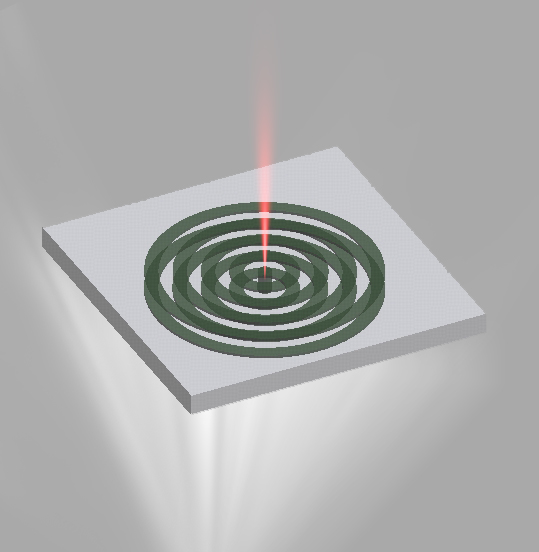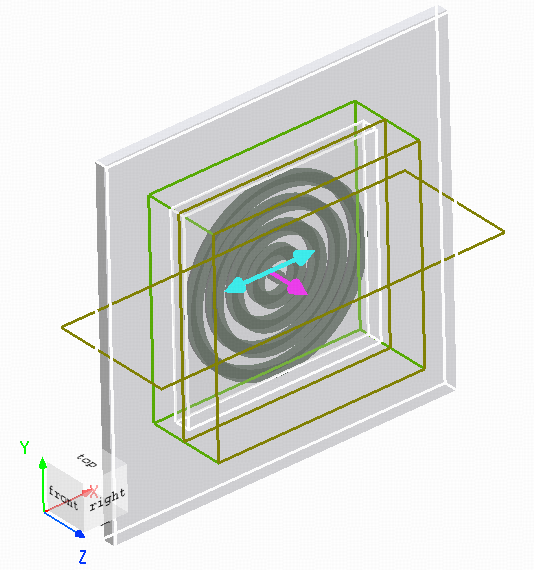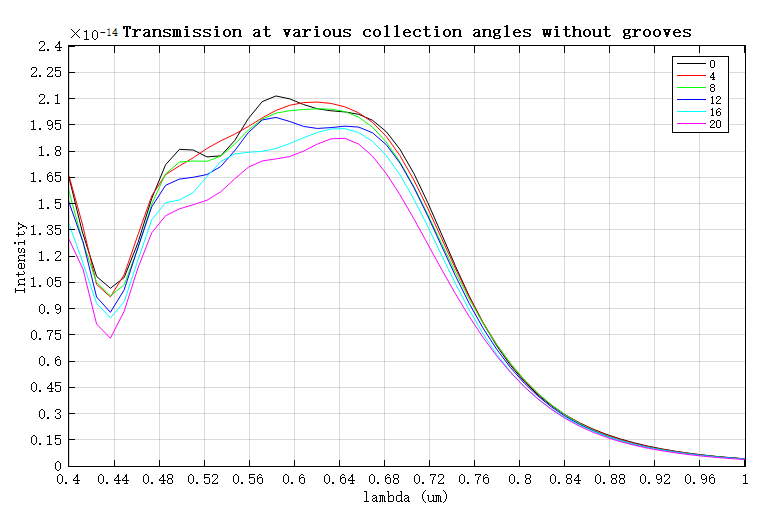Preface
The bull’s-eye aperture is a metallic subwavelength optical structure characterized by a central circular hole surrounded by periodically distributed concentric grooves. When the incident light illuminates the metallic surface, the concentric grooves scatter the incoming field and couple part of it into surface plasmon polaritons (SPPs) propagating along the surface. The SPPs emitted from different grooves interfere with each other, and when the phase-matching condition is satisfied, they constructively converge at the central aperture, leading to strong local field enhancement and wavelength-selective transmission through the aperture.
This structure has been widely applied in plasmonic sensing, optical coupling devices, and highly directional radiation antennas. In this case study, a bull’s-eye aperture fabricated on a silver film is simulated to demonstrate its characteristic field enhancement and directional radiation effects.

Simulation settings
Structure
The attached project includes a bullseye structure group used to build the simulation model. The silver film has a thickness of , and the central aperture has a radius of , fully penetrating the silver layer. Four concentric grooves, each with a depth of and a width of , are etched on both the top and bottom surfaces of the silver film. The groove period is .

Source
A total-field scattered-field (TFSF) source with a wavelength range of is used, incident from the bottom surface of the structure. Since the bull’s-eye aperture is non-periodic, PML boundary conditions are applied in both the and directions. Using a conventional plane source would cause diffraction and edge effects near the PML boundaries, preventing ideal plane-wave propagation. The TFSF source effectively eliminates these boundary disturbances and generates a uniform plane-wave field within the structure region.
To obtain an unpolarized result, two orthogonal polarization simulations are typically required. However, due to the central symmetry of the bull’s-eye structure, an equivalent unpolarized far-field pattern can be obtained from a single simulation by summing the result with its transposed counterpart, thereby simplifying the computation.
Simulation results
To analyze the effect of the bull’s-eye structure on transmission, two simulations are performed: one with concentric grooves and one without. In the bullseye structure group, the variable make_grooves can be set to 0 or 1 to conveniently enable or disable the concentric grooves, allowing direct comparison of the transmission characteristics between the two configurations.
Far field transmission spectrum
The provided sp_bulleye_analysis.msf script automatically performs two simulations: one including the concentric grooves and the other with only the central aperture. The far-field transmission spectra of the two structures are compared and plotted, as shown below.


When the simulation includes concentric grooves, the transmitted light is primarily concentrated around a wavelength of , exhibiting pronounced wavelength selectivity, with a peak transmission of . In contrast, without the grooves, the transmission at the same wavelength is only . This indicates that the presence of the grooves enhances the transmission by approximately three orders of magnitude, clearly demonstrating the field enhancement effect of the bull’s eye aperture at specific wavelengths.
Far field Angular Distribution
At the wavelength corresponding to the transmission peak, the script further calculates the far-field radiation intensity distribution, as shown below. It can be observed that when concentric grooves are present, the transmitted light is more tightly focused along the optical axis, with a divergence angle of approximately . In contrast, without grooves, the transmitted light exhibits a much broader angular spread of about .






